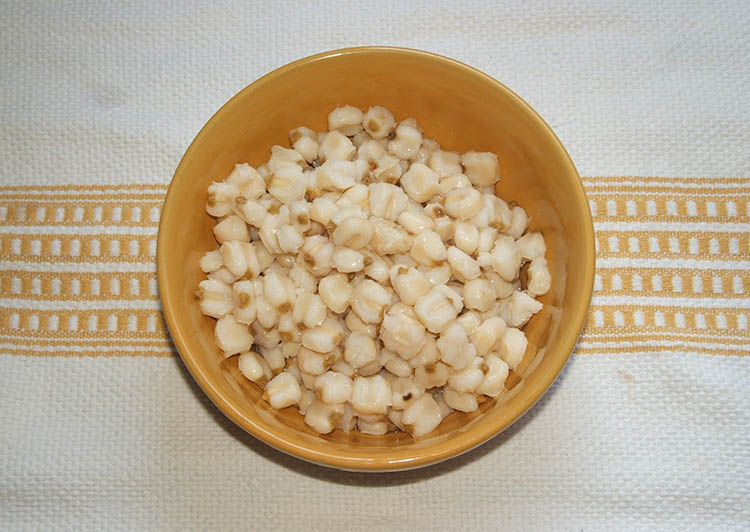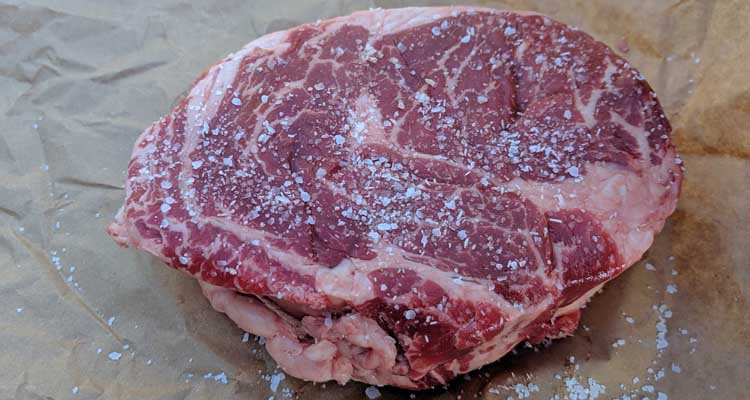Polenta Vs Grits: What is the Difference?

The polenta vs grits debate is something that has been around for a long time. There are many people who don’t know the difference between these two side dishes, and they may be wondering why it matters in the first place.
The truth is, polenta and grits are both wonderful side dishes to go with meat or fish, but there are some differences between them that you should consider when cooking each dish.
This article will take a look at polenta vs grits so you can decide which one best suits your needs!
What is polenta?
Polenta is a dish made from cornmeal that is a staple of the diet of Northern Italy.

When it is freshly cooked, polenta has a creamy texture that is easily spread. If the polenta cools, it becomes firm and sliceable, which allows for versatility in cooking methods or dishes to be created from it.
Polenta can also refer to any dish made with cornmeal as its main ingredient. For instance, some people make fried “polenta” balls out of leftover cooked polenta mixed with breadcrumbs and herbs which can then be dipped in sauce to eat.
What are grits?
Grits are a staple of the southern states of America, being eaten for breakfast with butter and salt.

They are traditionally made from dried white-hulled corn that is ground into a coarse flour that is finer than polenta flour.
Gits can also be made from yellow hulled corn flour, similar to polenta, or from hominy.
What is hominy?
If you have ever had Mexican food before, then you’ve probably tried some type of hominy (whether it was added to soup, chili verde, tacos, etc).

Source: Wikimedia / Glane23
Hominy is created by soaking kernels of maize (corn) in an alkali solution to remove the outer hull. This process is called nixtamalization and has been used by Mesoamericans for thousands of years.
The name of the process even comes from the Nahuatl word for hominy, nextamalli.
The nixtamalization process results in a finer texture and quicker cooking time, which is why most store-bought grits are hominy grits.
So, what is the difference between grits and polenta?
On the surface, grits and polenta seem very similar. Both are made from ground corn, both can be eaten hot or cold, and they’re even interchangeable in many recipes.
However, there is a key difference between these two products that make them distinctively different: texture.
Polenta has a flakier, coarser grind than grits, which tend to be ground a little finer. The result of this grinding process on the amount of starch present in each product leads to their differing final textures when cooked.
The use of yellow corn in polenta and white corn or hominy in grits adds to this effect.
Because grits have a finer grind than polenta, the starches within the individual pieces swell up more fully creating a creamier consistency after cooking making it perfect for breakfast.
By comparison, polenta has a chewier, more toothsome texture than makes it a great base for a variety of meals.
How do you prepare grits?
The best way to prepare grits is to add them directly into a pot of boiling water, and then reduce the heat so that they simmer for 20-25 minutes.
They can also be made in a microwave if you prefer! Just combine one cup of grits with three cups of cold water and mix well before popping it into the microwave on high for five minutes.
Then turn off the microwave and leave it inside for an additional ten minutes while still covered. After this time, check your consistency.
If necessary re-cover and return to microwaving on low (50%) power for another few minutes until fully cooked through. Finally, stir in some butter or cream cheese before serving them up in a bowl.
Grits on their own have a very mild flavor, but they do take on the flavor of whatever liquid they are cooked in magnificently. This means they can be used as a side dish to a huge range of meals as well as a hearty southern-style breakfast.
How do you prepare polenta?
The most effective way to prepare polenta is to add the cornmeal to water or chicken broth and then bring it to the simmer.
Traditional polenta is simmered for up to 50 minutes, but you can get quick-cook polenta that cuts this time down to just a few minutes.
When you add the polenta flour to the liquid, stir it continuously for a few minutes to make sure no lumps form. If you’re using quick-cook polenta, then just let it simmer until all of the liquid is absorbed.
Polenta can be eaten on its own or topped with different kinds of sauces or vegetables. It can also be chilled and cut into chunks before toasting or frying.
Which is better, grits or polenta?
Grits and polenta are both excellent, delicious, and versatile dishes. They can be served as a breakfast, side dish, or used in more creative ways.
To add some variety to your next mealtime experience you might want to consider making the switch from grits to polenta when cooking breakfast, lunch, dinner – heck even dessert!
If you’ve got a great recipe for grits or polenta, we’d love to hear about it in the comments below!







